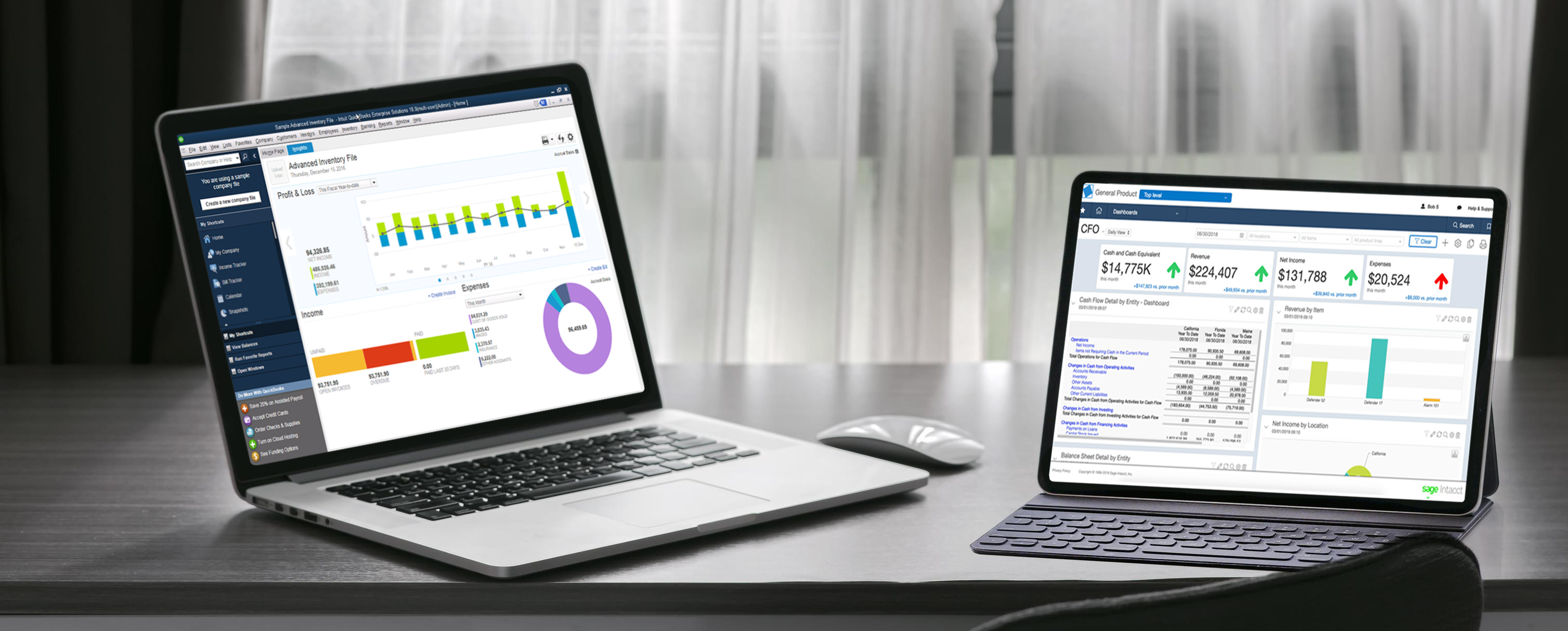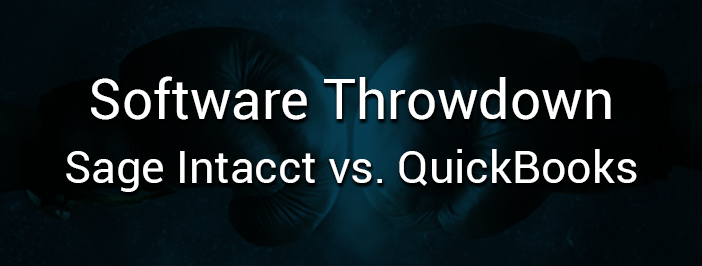Accounting Software Throwdown: Sage Intacct vs. QuickBooks
Sage Intacct and QuickBooks are two of the more well-known solutions among accounts. QuickBooks implementers boast a quick turnaround time to start using the system while Sage Intacct is the sole endorsement of the AICPA. But what do they look like when lined up side by side? Welcome to Accounting Software Throwdown, a series of blogs where we pit Sage Intacct against its competitors to see how they stack up. Up first, Sage Intacct vs. QuickBooks.
Building for Bootstrapping or Growth
QuickBooks was originally created as a desktop application for use by the owner or operator of the young organization. Much has changed since its inception but understanding that heritage can explain some of its design choices.
QuickBooks – both the desktop version called QuickBooks Enterprise or QuickBooks Online – is incredibly fast to start and forgiving of mistakes. The philosophy here is that a new business just starting out does not want to be preoccupied with the software. No, those companies are bootstrapping, working on the tightest of budgets with minimal time. Entries will be made by the owner or trusted colleague, and that person may not be an accounting specialist and may need to delete mistakes and make corrections. Those young operations are well served by QuickBooks.
“When you’re starting out, deleting your mistakes in QuickBooks is wonderful. When you have a team of people entering transactions, knowing they can delete any record of outbound payments or inbound cash kept me up at night.”
– Jennifer Devine | President, Devine Consulting
If that organization finds success, however, the design of QuickBooks can become an obstacle. As organizations add staff to handle accounting functions, the ability to delete a transaction – even allowing users to delete a printed check without a trace – makes QuickBooks a poor fit. At this point, a system with better controls like Sage Intacct can protect against fraud and make books audit-ready.
Scaling and Efficiency
As organizations grow, they often need to build out the product to add efficiency. QuickBooks does have some opportunities here, but far fewer than its competitors. QuickBooks allows information to be shared with Excel, for example, to perform ad hoc analysis outside of the system. A few systems, like Bill.com, for example, link to QuickBooks to add efficiencies to payables management.

Sage Intacct, in contrast, is made with a best-in-class design. That means an entire marketplace of integrating products exists to add efficiency without resorting to custom programming. Bill.com connects to Sage Intacct, of course, as does an entire category of solutions under the heading of AP Automation. That means that organizations can pick a solution with the exact mix of features and cost to scale their solution and add efficiency.
The Final Word
If you’re a small organization doing your own books while getting your operations off the ground, then QuickBooks is a wonderful place to start. The fast start-up and its forgiving nature can help small organizations find their footing and focus on getting established.
Likewise, if you’re growing to the point where you are adding staff and expanding your operations, it may be time to look at a more scalable and better-controlled system that can continue to grow with you.
[goal id=”9302″]
In either case, our team can offer a free consult to recommend the solution that’s right for you. You give us a call at 855.913.3228 or shoot us an email at info@altavistatech.com. You can even fill out our simple web form and someone will reach out to you within 1 business day! At Alta Vista Technology we take pride in being part of your solution.



